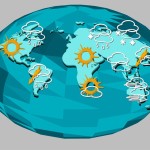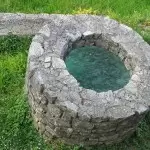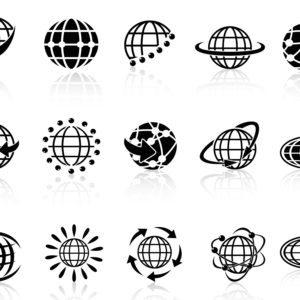
What is Geoscience?
“Geoscience”, also known as “Earth Science” is not a single discipline but an umbrella term for any science relating to planetary processes (1). Anything to do with the physical structure of the planet, its various atmospheres from the bottom of the oceans to the upper limits of the atmosphere, from short-term weather processes to long-term climate patterns, from plate tectonics and earthquakes and volcanoes to how hills and mountains form. if it's about the planet or its processes, it comes under one of the many sciences (listed below) that make up the geosciences. The scope of geoscience is so vast that it's grouped into four broad areas (2):
- Astronomy: the study of extraterrestrial bodies, the universe, their impact and influence on all areas of geoscience, particularly ecology, geology and meteorology. For example, the study of the moon and its impact on terrestrial tides, asteroid and bolide strikes
- Geology: Although we consider this area of science to cover rocks, it's actually concerned with any solid material that makes up the planet's structure. This includes the superhot core and mantles, the natural processes of erosion, soil science and sedimentology, for example
- Meteorology: Our first thought when we hear the word is the planet's weather systems. Although technically true, meteorology also studies the planet's chemistry, physical properties (and the processes that result from these) and atmospheric dynamics (weather, climate, trade winds)
- Oceanography: Everything concerning and to do with our ocean environments. This will concern the deep-sea processes, life within the oceans and ocean currents such as the vital Gulf Streams, ocean oscillations, and of course, El Nino and La Nina
Learn more about geoscience degrees.
It is difficult to explain precisely when geoscience or Earth science began, mostly because it is a modern term devised to unite many related yet disparate sciences under a single flag. We'd need to cover a history of each science individually to explain precisely where it began. While humans have been interested in what we could consider “geoscience” for millennia, the birth of the school only goes as far back as the Enlightenment. Until then, each science existed in a bubble and was a curiosity to an interested observer. From John Lubbock's interest in river formation from an archaeological as well as a geological perspective in the 16th century (37) to the paleontological studies in both Europe and North America throughout the 18th century, there is surprisingly little work done until then. Only in the 20th century did these disciplines begin to unite or, at the very least, recognize areas of mutual interest.
Today, the Earth Sciences or Geosciences even include areas of natural history such as paleontology and its various subdisciplines and those concerned with humanity's past such as archaeology and anthropology.
The Disciplines of Geoscience
Geoscience is a complex and broad area of study. It is possible to study geoscience as an umbrella discipline (although it is usually called Earth Sciences at most colleges and universities across the world). Students can gain a broad view of many of the following areas. Understanding the sciences that come to make up the umbrella term can help us understand the interconnectedness of the geosciences. Few exist in a bubble; few have little to no impact on other areas within geoscience.
Archaeology & Anthropology
It may surprise some that the study of people in the past (anthropology) and human material remains from the past (archaeology) are geosciences. Increasingly, these disciplines are expanding outside of their traditional study areas. In the past, archaeologists dug up trinkets, curious artifacts and “treasures” (a subjective term considering that even if something is financially worthless, it can be culturally priceless). Anthropologists studied humans of the past to learn how those societies lived. Today, both are multidisciplinary, straddling social sciences (3) and geosciences (4) examining areas with contexts that would previously have seemed unrelated. One area it is now inextricably linked is in the environmental sciences.
Archaeologists and anthropologists today are interested in the study of the environmental past and its impact on such practices as agricultural development and resource gathering, geology for mineral mining such as flint for stone tools, and iron deposits for metallurgy. Their overlaps with geography for practices in the past such as topographical adaptation and how past societies used landscapes to express power, create a defensive position, or to best use it for weather patterns. There is even a subdiscipline called “geoarchaeology” (5) which uses the tools and methods and applies the scientific principles of the geosciences to archaeology.
Archaeology also using tools used in a wide variety of other areas such as architecture - GIS and geophysics, cartography, aerial survey, satellite data and magnetic resonance imaging. Each of these tools is used in geological and geographical applications but are also vital to the modern archaeologist too.
Astronomy
Most people perceived astronomy as the study of planets, stars and celestial bodies (47). That is not untrue, but astronomy as a geoscience is largely concerned with how extraterrestrial bodies impact the planet's processes. Astronomers who look towards the Earth in their studies consider tidal ranges caused by the moon, Near Earth Objects and their impact on our planet when they pass by or are caught by our atmosphere. They will also seek to understand the geochemical or other changes that occur when an asteroid strikes the surface of the Earth. Astronomers overlap with many areas including atmospheric sciences (when astronomical events affect weather patterns - tidal ranges, the magnetosphere and even eclipses), palaeontology when looking at cataclysmic localized wide-scale extinction events and ecology.
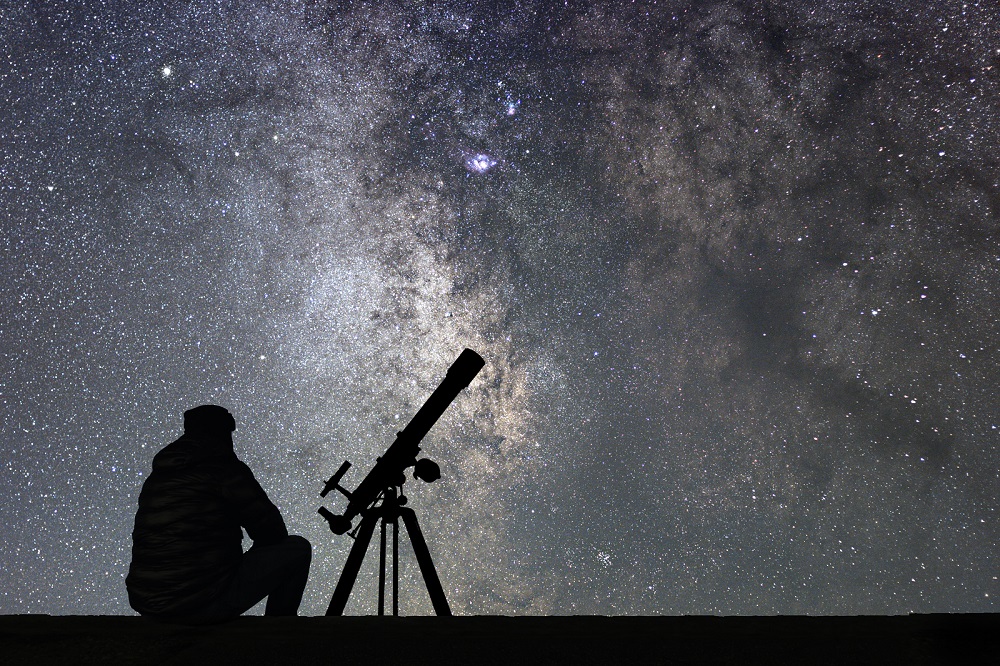
Atmospheric Sciences
From one of the least obvious to perhaps one of the most obvious disciplines that come under geoscience. Atmospheric science covers anything to do with the atmosphere from localized and short-term weather patterns (meteorology) to seasonal climatic events such as El Nino, La Nina, Trade Winds, and long-term climatic changes caused by aerial pollutants or natural processes (climatology/climate science). Experts in this area will also need a broad understanding of issues such as chemistry, physics and the dynamics of all planetary processes that impact the atmosphere short and long-term (6). However, they also require an understanding of extraterrestrial phenomena such as the processes of the sun and how it impacts atmospheric processes and the impact of aerial bodies such as asteroids, meteorites, comets and bolides (7).
The atmosphere is fundamental to many other geosciences. Weather patterns change with seasons, but we also have unseasonal weather and these require explanation and study. Atmospheric scientists examine these phenomena to look for trends or to understand why they are happening the way they are. This area also covers meteorology (the study of the weather) and make predictions for agriculture, the military, government and other areas. They are at the forefront of disaster relief and planning, using many techniques and technologies, some of which overlap with other disciplines. For example, satellite imagery and digital mapping.
Ecology
Ecology is the study of biological systems (8). It surprises many people to learn that the interaction of gut flora in the human digestive system is also ecology. However, in the context of geoscience, ecology is the study of the interactions of organisms within a localized, regional or global environment. A wide-open area of tundra in Alaska is an ecology, but so is 2-3 acres of heath in a small town or Central Park as an island of green in an urban environment. Arguably, so is a town or city regardless of its size. The balance between the biological systems that share it and the study of it and them is “ecology”. Those who study and work in ecology as a geoscience will examine a wide range of issues from biodiversity, species distribution and numbers, relationships between competing groups and between predators and prey, as well as the human impact on these aspects.
Some may also be interested in the nutrient cycle and ensuring it remains in balance, food supply, the impact of weather and climate on an ecology, life cycles of organisms, and sometimes genetics. It is mistakenly assumed it concerns environmentalism, but it is not, nor is it concerned with natural history. Its actual overlap is with genetics and evolutionary biology, with zoology and animal behaviors although its findings will have practical applications to these areas (9).
Environmental Science
Environmental science is the study of environments, the biological entities that inhabit it, the processes that affect it and human interaction (10). It is about studying all the aspects of the world in examining how the world works. In some ways, it overlaps with both ecology and atmospheric sciences, (particularly in areas such as climate science) but it differs in many ways too. Firstly, environmental science is an applied science that uses the evidence from most of the disciplines listed here in the application of finding solutions to environmental problems or in understanding environmental processes. Experts in this area use a broad multidisciplinary approach to an interdisciplinary field. Yet it is also an explanation and a tool for these other sciences. It's the study of the effects of natural processes on the environment, including ecology, atmospheric sciences, oceanography and seismology. This incorporates not just the biological (as in ecology) but also the physical, chemical, mineralogical, atmospheric, and geographical (including geology) in its application.
Geography
Geography is the area of geoscience concerned with describing and explaining the profile of the planet we inhabit. Geographers examine land masses, features on land and at sea, the people who inhabit these spaces, and the various planetary atmospheric and geological phenomena. It is broadly broken down into two areas:
- Physical Geography: the study of natural physical processes of the planet from geosphere (sub-surface) through the hydrosphere (water) biosphere (life) to the upper atmosphere)
- Human Geography: the examination of people and communities, cultural practices within a landscape, and landscape economics
The study of modern geography is not limited to our own planet (11). Many works with astronomers and astrophysicists in studying what we have learnt in the Space Age about our nearest planetary and lunar neighbors.
Geography is truly a universal scientific discipline examining both the hard sciences and the social sciences, in some ways marrying them together. As a broad area, it has four traditions (12) under its umbrella which include spatial analyses - both natural and anthropogenic, the study of place and regionality, relationships between people and the land, and of course - geography as an Earth science/geoscience. It can inform and crossover with other disciplines. Human geography lends itself to landscape archaeology, for example. Geography also concerns the findings and processes of geology, limnology, seismology and volcanology, and ecology. Without geography, there would be no cartography, GIS, surveying, satellite information, aerial survey, geomatics or many other tools of the sciences.

Geology
To many, geology is the study of rocks but that only covers one area of the academic discipline. Geology is actually the study of planetary physical structures and associated processes (13). This does include rock formation and stratigraphy, but it also concerns plate tectonics which examines mountain formation, and earthquakes and volcanoes, but also examines how the planet's structure has changed over time. They are also interested in the processes that create short-term or localized weather phenomena such as flooding, landslide and avalanches as well as erratic weather and the effects of geological events on the weather. For example, they might use their understanding of mountain formation to explain the impact of mountain ranges on the weather, and microclimates in valleys or on high land.
Geology overlaps with other disciplines of geoscience such as palaeontology and paleobotany, and even archaeology when considering natural processes of the Earth. These seemingly disparate areas of study share both tools and methods as well as an interest in the study of the past profile of the planet. Sometimes, geological events lead to localized climatic changes that can sometimes cause local ecological changes or even widespread extinction. In 2018, a seminal academic conference brought together world experts in geology to examine the key evidence and indicators for the Great Extinctions (14).
Geochemistry
Related to geology, geochemistry is the branch of Geoscience/Earth Science that studies the chemical processes of the structures of the planet (15). This includes chemical makeup and distribution of chemicals across a planet's geological profile. It uses the same principles and tools used in applied chemistry to understand geological events and systems rather than physiological aspects. Geochemists will typically examine the interactions between the crust and oceans and how geological events impact the ocean systems using chemical analysis. As with geology, it is not concerned only with the planet on which we presently live.
They might also seek to understand how and why certain rocks form from organic material such as the geochemical processes that create granite, basalt, natural gas, oil and coal. In future, geochemical engineers may be key to creating synthetic fossil fuels (16) and perhaps even reducing their carbon impact by creating compounds that consume rather than secrete carbon.
In future, we can expect geochemistry to play a fundamental role in planetary colonization. It's already provided useful data on planets within our own solar system. The Cassini Mission visited Jupiter (17) and ended when the probe crashed through the atmosphere, transmitting data on the atmosphere's chemistry as it went.
Geomorphology
Another discipline related to geology, geomorphology is the examination of land - the form and shape, how it came to take that particular form or shape, the processes that alter it and the examination of deposits and erosion of geological material over time (18). The land is shaped by meteorological, hydrological and geological processes - air (winds), water (as solid ice or liquid) shapes a landscape through short-term or long-term climatic events. Geomorphologists examine a wide range of topographies from ocean trenches to deserts, to hill and mountains, the processes of glaciation and melt. They also use cartography and GIS to map, trace and monitor the spread of these features over geological time.
They also make no distinction between long-term climate change (desertification for example) as agents of geological morphological change and single events (flooding or mudslide that fundamentally changes the course of a river by destroying cliffs), nor between localized events and larger geological issues that can cause widespread problems such as volcanic explosions. Some refer to them as “landscape detectives” as they see landform as puzzles for solving asking questions such as “why is the landscape like this?” and “what processes led to it taking this particular ecological or geological form?” Recently, such questions have been applied to the surface of Mars (19).
Geophysics and Geodesy
These are tools rather than areas of study, but they apply to most disciplines listed in this section. They have proven benefits and provided vital research data in most areas that require spatial data such as mapping or other 3D modelling (such as recording a building or mapping the extent of subterranean fossils). They vary slightly.
Geodesy: This is the examination of the form and morphology of the planet (20), its shape, position in space, the geomagnetic properties and gravity field - including how it impacts the planet's geology and other natural processes. It also records and examines how these three attributes change over time. Practical applications include shoreline mapping, examine land boundaries for property rights or even determining state or national borders where natural features are useful. Geodesists use cartography and GPS to determine the distance between points, and direction.
Geophysics: This differs from geodesy in that it studies the physical properties and processes of landscapes or the Earth as a whole, but also its spatial environment and relationships between elements in the landscape (21). Geophysics also goes one step further in applying technology to utilize quantitative data in processing results. Also, unlike geodesy, geophysics studies water cycles and the dynamic fluid processes of planetary oceans and atmospheric phenomena. Finally, it examines the relationship between the physical body of the Earth and The Sun and our Moon.
Glaciology
A niche area but one vital for the geosciences especially as we come to understand Ice Age Theory, Glaciology is the scientific examination of ice as a natural phenomenon, typically with a focus on glaciation, but also looking at seasonal changes in ice and frost levels in areas of the world that expect to get seasonal ice (22). This area is vital because the retreat of Arctic and Antarctic glaciers is already impacting global climate. Through this area of study, we know of the potential impacts of melting ice, for example, sea level rises, but also the havoc the massive increase in cooler water (and diluted salts) will play on the ocean jet streams that keep areas of the North Pacific and North Atlantic temperate.
This is an interdisciplinary and multidisciplinary area, integrating geology and geography, geomorphology and hydrology, geophysics and geodesy, and biology and ecology. However, it also has uses for archaeologists and anthropologists studying humans during the last Ice Age, the spread of stone tools and adaptation to increasing and retreating ice. It's useful for palaeontology in the study of climate change and the extinction of species such as mammoth, woolly rhino and even human ancestor species such as Neanderthals that went extinct at the end of the last Ice Age. Understanding the science of Ice Ages through paleoclimate data could also help predict and mitigate modern era extinction (23).
Hydrogeology
Hydrogeology is an area of study grouped with geology that examines the physical structures of our planet how it relates to water processes - as a solid, liquid and gas (24). This means the physical actions of water, its present and past motion, and geological indicators of past water presence - therefore it's as much about water behavior as it is about water's physical properties relating to geology. This is a complex science as lakes, rivers, seas and oceans do not always follow dry land topography. Other geological processes also affect how water acts and reacts - for example, volcanic and seismic activities such as geothermal processes that create geysers, springs (cold and hot)
The study of past water presence is particularly useful to understanding geological history. It was such a process of understanding water flow that led to the conclusion that there was once free-flowing water on the surface of Mars and also the theory that water deposits exist beneath the surface of that planet locked up in extensive cave systems (25). It ties in closely with glaciology when concerned with examining how glaciers shape and mold landscapes, for example in the creation of mountains and valleys - most notable in North America and northern Europe.
Hydrology
Not to be confused with hydrogeology, hydrology is the study of water - its physical properties, movement, quality, distribution, chemical makeup and its states (gas, liquid, solid) at any place on our planet from the deep oceans to the very limits of the upper atmosphere. It is less concerned with its impact on the geological structure of our planet (26). We know how important water is for life; the first complex lifeforms were aquatic and only later did their descendants evolve to be able to cope with the chemical makeup of the atmosphere on dry land. The amount of water available to us is as much a scientific problem as an environmental engineering problem. We need it to drink, to water our crops and livestock for food; it also has commercial and industrial uses.
Much of hydrology today is about ensuring water and food security, sustainability in a growing population, and conserving it for planetary ecology. Called “water budget” (27) it attempts to put a figure on how much is required and how much we can use as a community, as a country, or as a planet. Hydrologists may also study water pollution in our rivers, lakes and oceans and raise awareness of such problems.
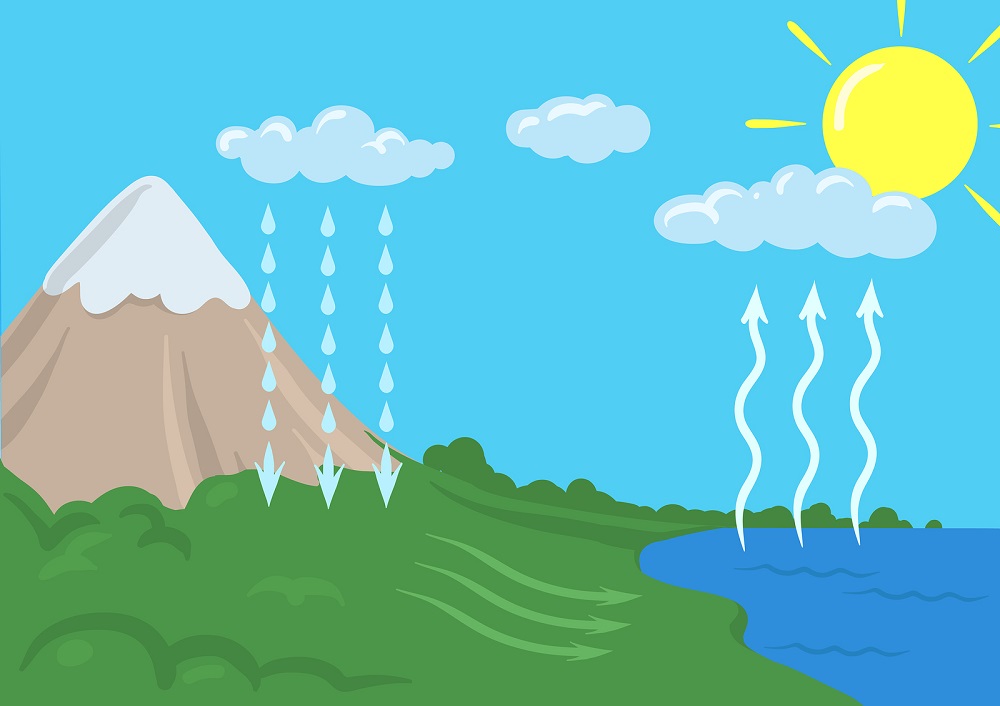
Limnology
On a similar theme to hydrology and hydrogeology, limnology is the study of water bodies as inland features. This means streams, rivers, ponds, lakes, springs, and wetlands, and landlocked seas, either saline or freshwater but not oceans (that would be oceanography). The difference is that the bodies that come under limnology have a direct impact on and are impacted by the dry land ecologies in which they are located; open oceans do not share such a relationship (28). This area of research concerns the biological, physical, chemical and geological aspects of such water bodies. It's closely related to a number of other sciences that come under the geoscience banner but many now consider it a subdiscipline of ecology.
All aspects of these water bodies are of interest to limnologists including how the water flows, its chemical and mineral makeup, food and nutrient cycle (including bacteria, viruses and algae), pollution issues, ecosystems, drainage, relationships with land and other water bodies, and human interaction (29). It is both a theoretical and an applied science.
Mineralogy
Another subdiscipline of geology but standing on its own in many important ways, mineralogy is the study of the crystal structures, chemical properties, optical attributes and many other aspects of minerals (30). Earth scientists who specialize in mineralogy might look at how such minerals form, their geographical location, topographical indicators and their potential industrial and commercial applications. Typically, they will examine the presence of metals (precious or otherwise), precious stones, but also naturally occurring substances such as clay and gypsum. Each of these materials has a monetary value or a practical use. For example, clay varies geographically with some types of clay suited to certain types of firing. Not all clay types are useful in household crockery due to the temperature firing range. Gypsum is a useful building material and its quality determines its potential use when mining.
Oceanography
This is the area of Earth Sciences or Geoscience concerned with the oceans and everything in them (31). This covers ocean geology (including plate tectonics), oceanic ecosystems, chemical composition, wildlife and natural processes such as the water budget and jet streams. They also look at how the oceans function globally, weather systems and patterns and their effects on every other aspect of oceanography for water bodies that are not landlocked, but connected to other seas and oceans. It is the opposite of limnology which is the study of landlocked water bodies (both saline and freshwater). Most oceanographers will specialize in one area when they finish a course of study, entering fields such as ocean geology or marine biology.
This area may also be subdivided into chemical oceanographers (who study chemical balances and its effect on the ecosystem such as coral bleaching); biological oceanography who study the wildlife of the various oceans; physical oceanographers examine the physics of the natural processes of the oceans such as wave systems, jet streams and so on. Then there are the oceanography geologists who examine plate tectonics and the physical structure of the planet beneath the oceans.
Paleontology
Like archaeology (see above) many are surprised to see that paleontology and its various subdisciplines (paleobotany, invertebrate paleontology, micropaleontology) is now classified as an Earth science/geoscience. It once was about digging up curious fossils of extinct species, But today, due to its extracurricular interests in ecology, geography, geology, climate science (and paleoclimate studies), topography and other aspects of the natural world, it's firmly one where its adherents take into account the natural world in context.
Just as archaeologists are interested in past environments and environmental change, so are paleontologists. They also use similar tools to archaeologists and anthropologists such as satellite data and spatial studies to determine geographical distribution, applied using GIS and geophysics. Many of our top colleges and universities combine resources, methods and tools when studying paleontology in a geological context. Most species often span geological time (32) and are accessed through research and study of sedimentary rock. Geological change (such as plate tectonic shifts) are equally important in piecing together how the continents may have fitted together hundreds of millions of years ago. The distribution of paleontological remains across ocean boundaries is another piece in the puzzle of how the world may have looked long before the arrival of the first primates from which humans would eventually evolve.
Petrology
Closely related to geology within the range of geosciences, this is the area that examines how and why certain types of rock form in the way that they do. Rock types are broken down into igneous (of volcanic rock), metamorphic (when a chemical process changes one rock type to another), and sedimentary (originating from the build-up and compression of organic material such as silt, dead plants and microfossils) rocks. This area of study is particularly useful in fossil fuel discovery and use, as well as an examination of the properties of the different type of rock (33). It utilizes other areas of geology such as mineralogy and geochemical studies to explain rock texture, composition and properties, or why they ended up shaped a certain way. A petrologist may be interested in the rock layers of the Grand Canyon and explain the stratigraphic formation.
But now there is a fourth branch. Experimental petrology seeks to discover the potential uses of rock types and their applications by testing theories based on their physical and chemical properties. This area may lead to the production of renewable (and possibly cleaner with the right investment) synthetic fossil fuels. However, it also has academic uses in the study of rock formations in the upper and lower mantle of our planet, an area difficult to study rock properties in situ.
Seismology
This is the geoscience concerned with planetary elastic vibration, also known as “earthquakes” (34, p1). Seismologists study the appearance of earthquakes, predict them, and study their form and results as well as looking at the structures that can cause them. It is as much about the ripple effects and the aftereffects, including aftershock profile as it is about prediction (which is the public face of this area of the science). Seismologists use a variety of electronic survey equipment as well as applied scientific methods, particularly in math and physics.
Earthquakes are an ongoing problem and a matter of curiosity in examining the small geological events that can shape the environment. Largely concerned with plate tectonics, lately it's included wider environmental effects including destruction of natural habitats such as forest, localized or regional flooding through tsunamis, and the wider impact on the local and global atmosphere.
It's a relatively young science although humanity's interest in earthquakes goes back several millennia. The first instruments capable of predicting earthquakes were invented in the 1860s (34, p4). Today, the science can be broken down into further subfields. One of which is paleoseismology which is the study of ancient earthquakes, how they have shaped environments, and allows researchers to make better predictions and more thorough explanations of their long-term effects (34, p26).
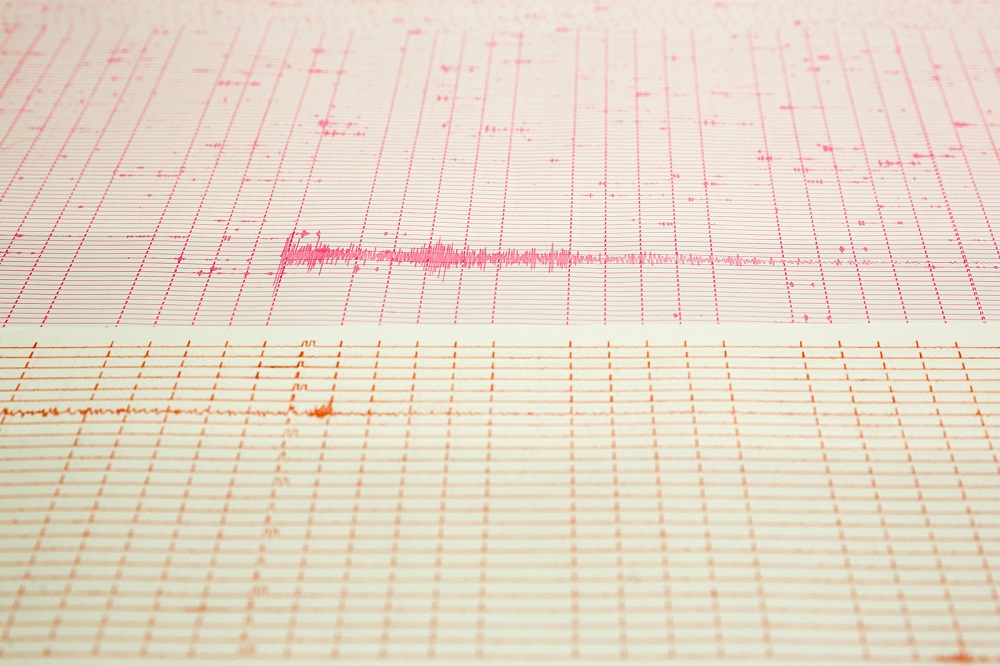
Soil Science
Soil science studies the Earth's surface natural resources (35). It covers everything from the nutrient cycle and soil formation, its regional physical and chemical properties, its relationship to fauna and flora, but also classification and soil engineering. Some are also interested in soil regionality and cartography, sometimes for agricultural purposes (some crops won't grow in certain soil profiles) such as acid/alkali, fertility, depth and quality. Soil science is broken down into two areas: pedology and edaphology. The first is the study of the form and formation, chemistry and classification of soils. The latter is the examination of soil ecology, that is its relationships with plants, trees and shrubs.
Soil science is becoming increasingly important in the developed and developing world. We need to grow enough food for our increasing population and to do so sustainably. Preserving soils in so-called “marginal landscapes” (land of poor agricultural quality) is just one issue - use of pesticides and herbicides and their impact on soils, sustainable water use, pollution and soil fertility have raised concerns about how to preserve soil are ongoing too. Also, the results of flooding and drought and general food consumption are current problems soil science is presently engaged in tackling.
Speleology
Speleology is the academic study of caves and cave systems. Particularly, researchers examine how they form and why. They also examine the types of rock in which they form and the various processes that lead to it. It was once a simple curiosity of geology, but it has become so separated and unique that it's considered a whole area of study in itself (36). The modern speleologist needs to understand geology, chemistry and physics, but also understand the importance of cartography (for mapping cave systems). There is also overlap with biology as some species adapt to living in cave systems, species such as blind cave fish, and archaeology and anthropology as caves represent some of human ancestry's earliest “homes”. Discovery and conservation of cave art is as much interest to speleology as it is to archaeology. Also, caves have been the source of some of our best sources of fossils - therefore, it is also useful to paleontology also.
Volcanology
Volcanology is often paired with seismology in academic discussions as the two share similarities (for example, both concern shifting plate tectonics and geological weaknesses that lead to each subsequent catastrophic geological phenomena). However, the two disciplines differ in many ways. Volcanology studies something that been physically seen - the creation of volcanoes and its ejecta including magma, lava, rock deposit and the ash (including its environmental impact). A volcanologist examines both the formation and eruptions of existing volcanoes. They might also be interested in historic (including prehistoric) episodes of eruptions. Volcanology uses similar equipment in monitoring ground tremors to predict a volcanic eruption, but that is largely where they part.
Future Challenges for Geoscience
The birth of geoscience as a synthetic area created out of necessity to bring together various and seemingly otherwise disconnected areas suddenly realizing areas of common interest (38). However, it is in the future where geoscience's golden age potentially lies. With the benefits of instant global communication, a push towards open access research, “citizen science” and Big Data, the discoveries of the next decade could shape the importance of geoscience for a long time to come.
Climate Change
The biggest challenge for any science is coping with a changing climate (39). In fact, anthropogenic climate change is now all but a foregone conclusion that underpins many of the other problems listed below. From erosion of natural and archaeological features to protect them for future generations, countermanding the receding glaciers and its impact on global climate and localized weather systems, we expect much more research funding to go towards stabilizing the Greenhouse Effect by reducing carbon emissions. Limnologists and oceanographers will see changes in their topographies; the latter will experience sea-level rises whereas the former will need to contend with the effects of flooding, drought and overuse of water in the most populous areas. It is expected that geoscience will play a key role in raising issues and in providing potential solutions.
Peak Oil and Renewable Energy
Some say that peak oil is already here (40, p11). Geosciences will be fundamental to many areas - firstly in prospecting for further pockets while we still depend largely on fossil fuels. As discussed above, geochemists and others who work with chemical processing may be able to develop synthetic fuels and discover new sources. At the other end of the spectrum, geoscience will also be vital to expanding renewable energy. Skills will be needed to will find the most efficient places for wind turbines, solar arrays, harness tidal power, plan lakes and reservoirs for hydroelectricity and develop geothermal processing. There is also the issue of ensuring there is enough energy, that the infrastructure supports enough capacity, and that conservation issues are respected.
Feeding a Growing Population
The planet is of a finite size and while it is nowhere near at full capacity, our present methods of agriculture, water use, and urban land use will require this finite space to be used more efficiently than ever before. As new technologies develop in agriculture, it will be down to the various geosciences to explain how to most efficiently use them with the available land that we do have. Technologies such as genetic modification for food is one issue and some transgenics may allow crops to grow more easily with greater yield in marginal landscapes (41). However, the amount of food we produce and ensuring there is enough to feed a population is not the only issue.
Food and Water Security
One of the biggest issues of today is food security. This is inextricably tied to water conservation. A growing global population puts more pressure on the water supplies of the planet. People require clean drinking water for their health, but food also needs a sustainable and regular supply of water (livestock and crops) to ensure a healthy and sustainable food source. It is already a challenge for the various geosciences to ensure that enough people have access to clean water that is both healthy and sustainable. There are hydrological issues in many continents where freshwater supplies are slowly disappearing due to overuse of the resource (42) either to water crops, for increased industrialization, or simply being drunk dry. This is potentially an ecological disaster for the areas most affected.
Risks from Geological Activity
There are several issues surrounding this problem. The first is the increase in so-called “fracking” of gas from deep deposits (43). Many reports have already been published on the potential geological problems that this may cause, leading to unstable rock and erosion of soil layers and earthquakes (albeit low on the Richter Scale). Human populations are also expanding into areas with known geological problems. Civilizations have always lived close to volcanoes because the soil is particularly rich. But volcanoes erupt and cause massive disruption and death; the same is true of earthquakes. The findings of geoscience may be required even more in future to determine risk factors when building new settlements.
Risks from Meteorological Activity
Increased erratic weather and extreme weather will require the civil engineers and developers of tomorrow to increasingly seek evidence and guidance from geoscience. From the USA's west coast drought to the east coast's hurricanes and the central states tornadoes, geoscience is and has always been at the forefront of research into potential disasters and extreme weather (40, p12). With the problems of climate change creating more problems, more intense, erratic and frequent extreme weather, that link is expected to continue.
Tourism and Conservation Issues
While almost every country on Earth relies on domestic and international tourism for the financial benefits it brings, archaeologically and naturally sensitive areas and landscapes can suffer the effects of mass tourism. Research by various geosciences has led to visitors limits placed on the pyramids of Giza Plateau, Machu Picchu, the Lascaux Caves in France, and even some National Parks due to the problems of mass tourism (44). This is a problem of sustainability; it will require efforts of not just conservationists, but also geoscience for infrastructure, chemical analysis, pressure on water supply and sensitive landscapes.
Mineral Raw Materials
Is our mining for stone, metal, gypsum and clay sustainable? How long will it take for each of these finite resources to run out? It's not just oil, coal and gas that will eventually expire - so will mineral resources. It may not be feasible to leave these in the ground if we want to continue providing homes, infrastructure and resources for our growing population. Several problems surround this - the balance between employment and infrastructure against the environmental cost of extracting it. In a world where we are trying to do something about our carbon emissions, mineral extraction could become a flashpoint, especially as it intersects with water and resource security. One French paper calculates that exponential expansion of its alluvial and stone deposits will last no more than 20 years (39).
Ethics and Data Collection
Unlike other sciences (particularly medical science and the social sciences), geoscience has yet to establish a firm and agreed set of ethical standards. While some may argue that much of its data does not pertain to people or populations and therefore doesn't necessarily need one, many geoscience philosophers and researchers disagree. Scientific integrity is important (45) and so is cultural sensitivity (46). In some cases, geoscientists (particularly when dealing with archaeological or anthropological data) will examine geoscientific information for sacred landscapes or areas believed important to a cultural identity. There has been much focus in recent papers and conferences on how to develop a universal code of ethics for these interrelated sciences.
Sources
- https://www.americangeosciences.org/critical-issues/faq/what-is-geoscience
- http://www.actforlibraries.org/areas-of-earth-science/
- http://intarch.ac.uk/journal/issue42/8/7-1.html
- https://www.euppublishing.com/doi/abs/10.3366/gas.1984.11.11.1
- https://earth.indiana.edu/research/research-areas/geoarchaeology/index.html
- https://atmos.washington.edu/academic/atmosdyn.html
- http://sp.lyellcollection.org/content/140/1/105
- http://environment-ecology.com/what-is-ecology/205-what-is-ecology.html
- http://www.uvm.edu/~bmitchel/Publications/Tierney_Forest_monitoring.pdf
- http://www.sees.manchester.ac.uk/study/undergraduate/undergraduate-courses/environmental-science-bsc/whystudyenvironmentalsciences/
- https://www.newscientist.com/article/dn25907-epic-map-reveals-marss-geography-in-unrivalled-detail/
- http://www.geog.ucsb.edu/~kclarke/G200B/four_20traditions_20of_20geography.pdf
- https://geology.com/articles/what-is-geology.shtml
- https://www.geolsoc.org.uk/lyell18
- https://www.acs.org/content/acs/en/careers/college-to-career/chemistry-careers/geochemistry.html
- https://www.sciencedaily.com/releases/2018/01/180102134833.htm
- https://physics.aps.org/articles/v3/26
- http://geomorphology.org.uk/what-geomorphology-0
- https://www.nature.com/articles/s41561-018-0093-9
- https://oceanservice.noaa.gov/facts/geodesy.html
- http://www.eegs.org/what-is-geophysics-
- http://www.scienceclarified.com/everyday/Real-Life-Earth-Science-Vol-3/Glaciology-How-it-works.html
- https://www.livescience.com/48496-ice-age-extinctions-modern-survival.html
- https://www.sgm.gob.mx/Gobmx/en/Education/What-is-Hydrogeology.pdf
- https://www.researchgate.net/publication/236262104_Water_resources_and_hydrogeology_of_Mars
- https://water.usgs.gov/edu/hydrology.html
- http://www.uni.edu/hydrology/Whatishydrology.html
- https://limnology.org/what-is-limnology/
- https://aslo.org/page/limnology
- http://www.bgs.ac.uk/scienceFacilities/laboratories/mpb/mineralogy.html
- https://oceanservice.noaa.gov/facts/oceanographer.html
- http://planetary-science.org/planetary-science-3/petrology/
- http://www.iris.edu/hq/lrsps/seis_plan_final.pdf
- http://www.sun.ac.za/english/faculty/agri/departments/soil-science
- http://scholarcommons.usf.edu/ijs/vol44/iss3/5/
- https://royalsocietypublishing.org/doi/full/10.1098/rsnr.2013.0053
- https://www.britannica.com/science/Earth-sciences
- http://www.brgm.eu/news-media/10-core-challenges-geosciences
- https://www.nap.edu/read/13236/chapter/3
- https://www.nature.com/collections/dflrmxqryt#commentary
- https://serc.carleton.edu/NAGTWorkshops/health/case_studies/hydrofracking_w.html
- https://sustainabledevelopment.un.org/content/documents/12023Kulshreshtha.pdf
- https://agupubs.onlinelibrary.wiley.com/doi/book/10.1002/9781119067825
- http://www.mdpi.com/journal/geosciences/special_issues/geoethics_geosciences
- https://www.space.com/16014-astronomy.html
- Guide to Parasitology - November 19, 2018
- Deserts as Ecosystems and Why They Need Protecting - November 19, 2018
- Conservation: History and Future - September 14, 2018


